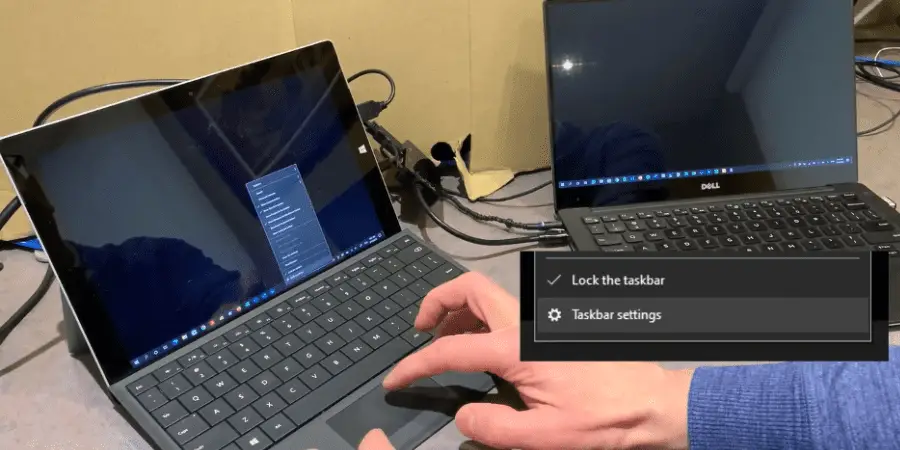Using multiple screens to increase your productivity is something that has been gaining popularity lately. Besides its use in workplaces, gamers also use multiple screens to enhance their gaming experience or to stream their games on the internet or YouTube.
Whatever may be the reason for you wanting to use multiple screens, you should know how to do so. And if you are someone who does not have PCs or multiple monitors and instead of two laptops, you could be left wondering how to connect one laptop to another laptop screen.
What to know?
- Normally people connect laptop screens using Miracast, a feature that came out and works well in Windows 10. It’s a wireless connection.
- Not all laptops have HDMI ports.
- For those who do have, the HDMI port is an output port. Rarely you will find a laptop with an input HDMI port. And it will be really expensive.
- This means that you cannot use an HDMI cable, connect it to the HDMI ports of both your laptops and expect it to work.
If you cannot use an HDMI cable in this way, then what can be done?
The answer to our needs – A Capture card
The main problem is that the HDMI port on our laptop is an output port and no software could convert it into an input port because this is a hardware incompatibility issue. Not a software one. Thus, we turn our attention to an additional piece of hardware known as the capture card.
What is a capture card?
A capture card can be thought of as an external HDMI input adapter that has got nothing to do with the HDMI port. It is plugged into the USB port and acts as a device giving video input to the laptop. It looks somewhat like this.

You may find other types of capture cards made by other companies too which may be varying in shape a bit. But any of these will work.
How exactly does an HDMI cable fit in here?
Well, as shown, the capture card has a port for HDMI cable that says input. This means that an HDMI cable will be necessary to make this work.
Why would you want this cumbersome connection over a wireless easy to setup connection?
The reason why many people end up looking for ways to hook up both laptops with an HDMI cable is that wired connections are more stable, and rarely are there any kind of latency issues.
Whereas with Mira cast or wireless projection, users have gotten infuriated at times because of the non-responsiveness. Also, gaming and other video streaming are resource-intensive and it would not be wise to do it wirelessly.
The Jackpot – How to do this.
Ok as explained, you need the following things before beginning,
- Primary laptop (that acts as an output source, meaning this is the one whose screen you want to share)
Secondary laptop (it will act as an input; its screen will be used as a monitor)
Note: Ensure that this laptop has a USB 3.0 portA capture card
Note: Ensure you buy the one with a USB 3.0 port. Others have a 2.0 port but they do not work properly.

- An HDMI cable
Once you have these things at your disposal, let’s fire things up.
First of all, plug the capture card into the USB 3.0 port of your secondary laptop.

Now pick up the HDMI cable and plug its one end into the capture card.

Plug in the second end into the primary laptop.

Now on your secondary laptop, right-click on the taskbar and open settings.

Turn on automatically and hide the taskbar in desktop mode.

Now, on your secondary laptop, open up the camera application. Note that we are going to use this app to extend or duplicate the screen of the primary laptop as required

- In the camera app, click on the change camera icon present at the right top corner of the screen.
Doing this will start displaying the screen of your primary laptop on the secondary laptop.

You might be wondering that you can see a screen but it’s not similar to the primary laptop. It’s because the displays are set to extend the screen and not duplicate it.

This can be changed from settings. All you have to do is press the Windows key plus P and choose whichever option you want.
To conclude,
Using multiple displays to enhance your productivity or to have an amazing gaming experience is something that is recommended. And while it may seem difficult to do so because just connecting the HDMI ports does not work, all you require is a capture card and you are good to go.
Related Articles:
What is cec control on android box? (Step-by-Step Instructions)

